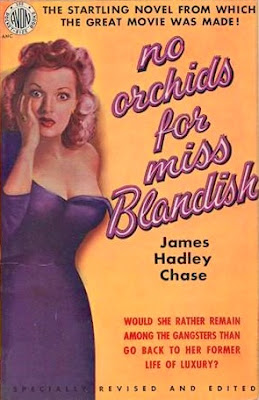I’d
say that this book has echoes of Richard Stark’s Parker novels—but I can’t,
because it was published seven years before the first Parker book, The
Hunter. What’s the opposite of echoes? Beats me, but the feeling was there,
the whole way through.
The
author doesn’t fool around here. As the story begins, the crime has already
taken place, and tensions are rising. The plot is simmering on page 1 and keeps
getting hotter until—on the final page—well, you’ll have to read it and see.
It’s the kind of thriller that keeps your eyes glued to the page.
Our
hero is Cal Dent, the guy who masterminds and bankrolls the kidnapping of a
little rich girl. As Parker will do so many times in years to come, Dent chooses
the crew, then struggles do deal with their potpourri of personality disorders
to keep the job from going off the rails. And while each member of the gang has
a skill Dent requires, each has a nasty quirk that worms its way to forefront.
By the end of the story all four quirks are quirking full blast, and Dent is
battling an unexpected one of his own. I don’t remember Parker ever having it
this tough.
Lionel
White manages to shift point of view anytime he wants, and gets away with it,
immersing us in every scene from multiple angles. We know what each of the
Snatchers is thinking and feeling about the situation—and about each other—at
every step of the way. Instead of being distracting, it heightens the tension.
As
you’d expect, Cal Dent is the clearest thinker of the lot, and the closest to a
normal human being. Though a career criminal, he has scruples—even a
conscience—and has carefully planned this kidnapping to be his last job, the
one that sets him up for life. Commensurate with his management skills, he
expects to walk away with half the take, a cool $250,000.
Under
Dent’s skin right from the start is Pearl, a hard-edged dame who oozes sex
appeal and wields it like a weapon. At the moment, she’s hooked up with a
brutal and ignorant thug named Red, who seems to be on hand chiefly as a
driver. Hating everyone, and being hated in return, is an even more brutal,
bestial and utterly merciless thug named Gino. Aside from Dent, the only member
with any brains is Fats, an unkempt, foul-smelling rat who proves too smart for
Dent’s own good.
Also
on hand, and a major factor in the proceedings, is the kidnapee’s nanny, a
hot-but-clean young babe who fires the blood of every Snatcher but Pearl.
The
whole bunch are lot are holed up in a beach-front house in a rural area of Long
Island (which presumably still existed in 1955), from which they venture out
for sustenance and the needs of Dent’s scheme, and where they are bedeviled by
a small-town cop who’s a lot smarter than he lets on.
It
all comes to a boil with a slam-bang finish, with plenty of surprises along the way.
This was White’s first book (with 35 or so more to come), and was filmed in
1968 as The Night of the Following Day,
with Marlon Brando, Richard Boone and Rita Moreno.




















































